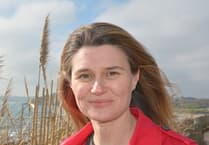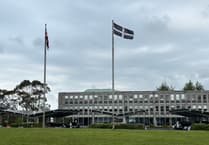Bodmin Moor has been formally designated an International Dark Sky Landscape, confirming its status as one of Cornwall’s star attractions.
It becomes the first International Dark Sky Park in an Area of Outstanding Natural Beauty (AONB).
Following a bid by Cornwall Council and Caradon Observatory, the International Dark-Sky Association (IDA) said it awarded the prestigious designation in recognition of the exceptional quality of the night sky, commitments to avoid light pollution and the provision of educational outreach.
IDA executive director J. Scott Feierabend said: ’Its position within the Cornwall AONB clearly establishes that the conservation of dark night skies is wholly compatible with the notion of protected landscapes where people routinely live and work.’
The designation covers 80 square miles of the moor within the Cornwall Area of Outstanding Natural Beauty plus a two-mile buffer zone around it.
Those behind the bid hope Dark Sky status will boost tourism and the local economy, especially in the darker spring, autumn and winter months.
Within the designation area residents and businesses will be encouraged to protect the night sky from light pollution by managing their lighting better.
No-one will have to change their existing lights but people will be provided with a guide for dark sky friendly lighting to help them when they need to replace old lights or fit new ones.
They will also be encouraged to only use lighting where it’s needed.
Bob Egerton, Cornwall Council cabinet member for planning and economy, said: ’I am sure that this will help to stimulate greater interest in astronomy and will bring more people to Bodmin Moor to view the wonders of the night sky.’
Sue James, Cornwall Council cabinet member for environment and public protection, said: ’Most people love a starry sky, and thanks to its low levels of light pollution Bodmin Moor has some of the darkest skies in the country.
’This designation will support the varied wildlife living on Bodmin Moor as having defined day and night is essential for many species to survive.’
Ken Bennett, founder of Caradon Observatory near Darley Ford, said: ’Our main mission at Caradon Observatory is to inspire students of all ages to consider careers in the sciences and engineering by showing them the wonders of the universe with images taken from our site on Bodmin Moor.
’We’re keen to build on the area’s Dark Sky designation and are now aiming to become a research grade observatory so we can offer more comprehensive education and community outreach opportunities in the future.’
Dr Wayne Thomas, of Caradon Observatory, said: ’By creating a Dark Sky Landscape on Bodmin Moor, we are establishing a legacy for future generations and helping to protect our own health and the health of our planet.’
Anita Grice-Goldsmith, director of CPRE Cornwall, said: ’Hopefully this will act as a catalyst for education and good lighting across Cornwall.’
There is more information about Bodmin Moor’s International Dark Sky Landscape designation on www.cornwall.gov.uk/darksky




